Genus Ipomoea Rank Species | ||
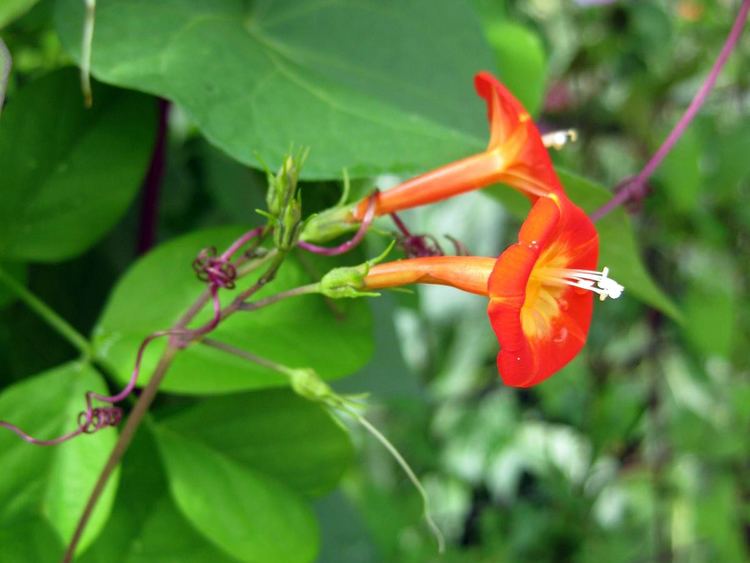 | ||
Similar Ipomoea quamoclit, Ipomoea hederifolia, Ipomoea hederacea, Ipomoea lacunosa, Japanese bindweed | ||
Ipomoea coccinea is a flowering plant in the family Convolvulaceae known by several common names including red morning glory, redstar and (ambiguously) Mexican morning glory.
Contents

It was first described by Linnaeus in 1753.
Description
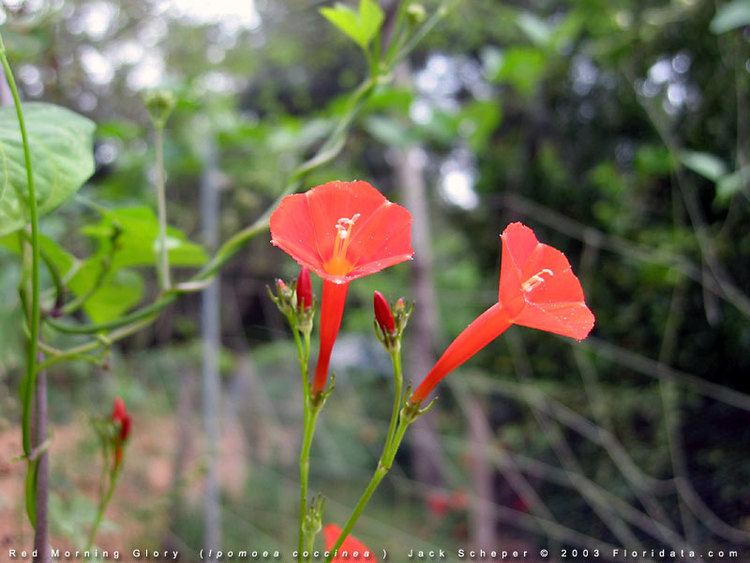
Red morning glories are fast growing, twisting climbing flowering vines that is attracts butterflies. The leaves are heart shaped at the base, and are usually three-lobed. They grow up to be about 2-4 inches long and about half as wide. The vines can reach 10 or more feet in length. The flowers are dull red with an orange throat. Red morning glory flowers are borne in clusters of a half dozen.
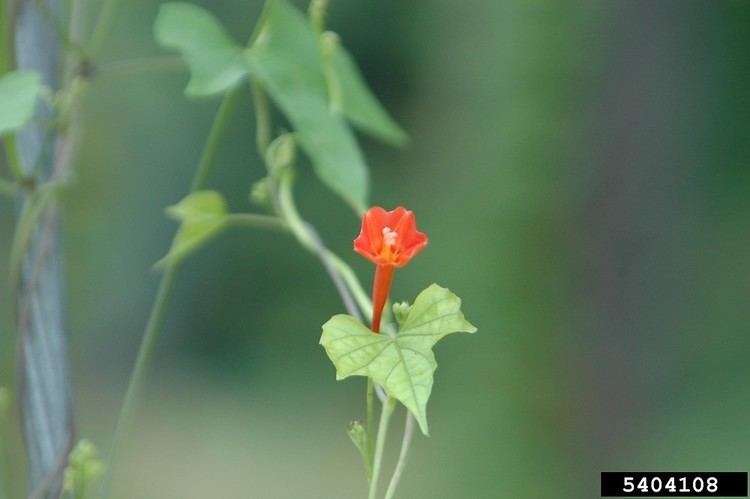
The name Ipomoea comes from the Greek roots “isp,” which means worm, and homoios,’which means resembling. The name refers to the worm like twining of plants in the genus. “Coccinea” means scarlet which is referring to the color of the flowers.
Habitat and ecology
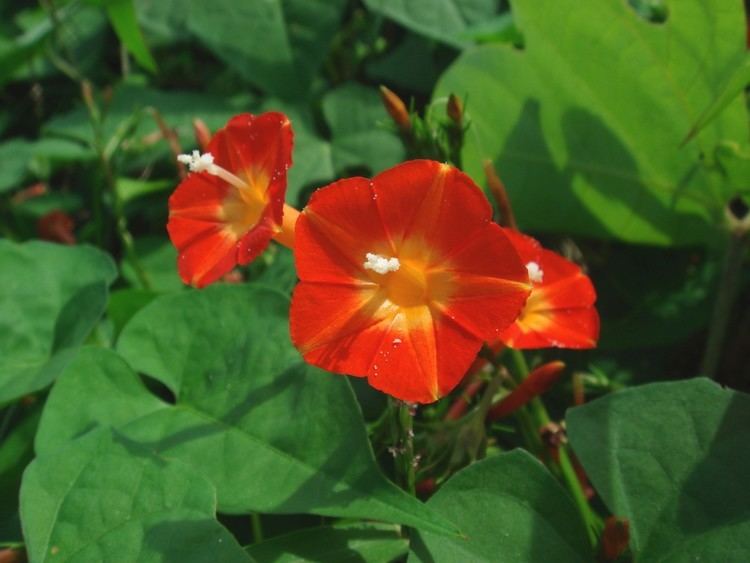
‘’’Ipomoea coccinea’’’ are believed to be native to eastern North America from New York, west to Kansas, and south to Florida and eastern Texas. They can be found in disturbed areas along roads, stream banks, fence rows, old fields and other waste areas.
Morphology

Ipomoea coccinea are often confused with Ipomoea quamoclit since they the flowers are similar. However, the leaves of the two species are very different. Ipomoea quamoclit has leaves that are more divided, resembling a pine bough, and look more like a cypress vine. Ipomoea coccinea has more of a red orange color while I. hederifolia has more of a darker, red color. Also, they have more of a pinched shaped seed. Their leaves are lobed but not separated into leaflets. There is one leaf per node along the stem; the edge of the leaf blade depends, some have teeth and lobes.
Flowers and fruit
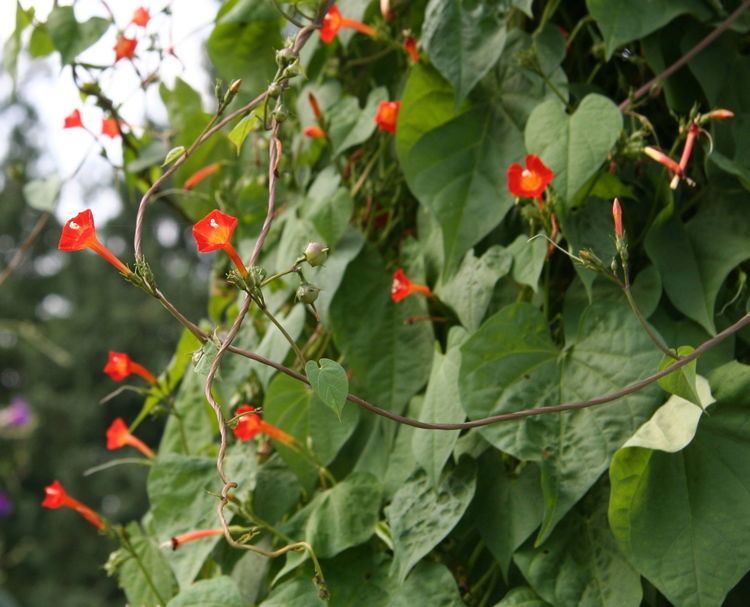
These flowers bear capsular fruits, with pedicels that are reflexed below the fruit, but erect in the flower. The fruits are 6-7 mm across. Mature fruits are more spherical in shape and have a light brown color and can contain up to 4 seeds. Seeds are more a wedge shaped, about 3-4 mm long; this can range from dark brown to black. Every year about 1-4 seeds per fruit are most likely disperse. The capsule will appear brittle, showing that it will shatter upon contact with the ground, releasing the seeds.
Usage
Using red morning glory is an annual plant, so using by letting it grow up as a climber over a fence, it can make a summertime screen to attract butterflies.
Medicinal
The plant flowers between the months of November and January and fruits in January and February, in central India. The plant is cultivated in many parts of India as an ornamental plant but is also use as a medicinal property; they use the roots to induce sneezing.
